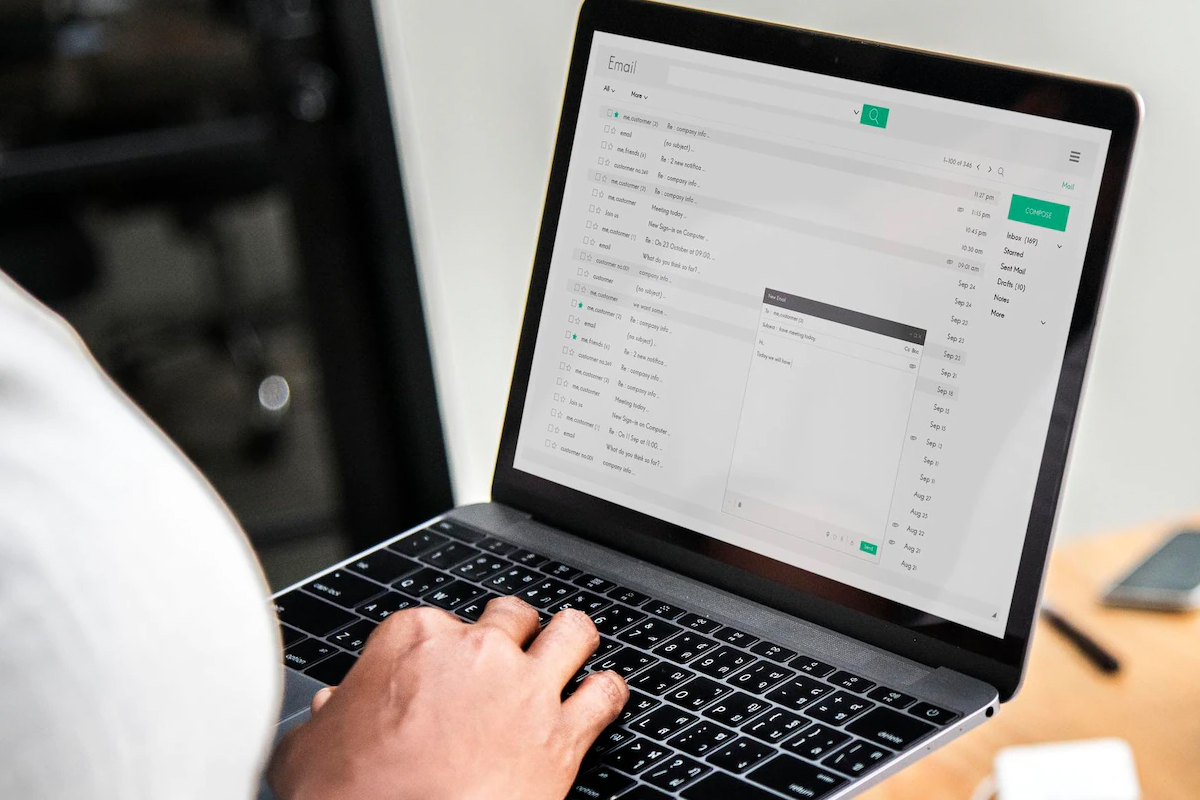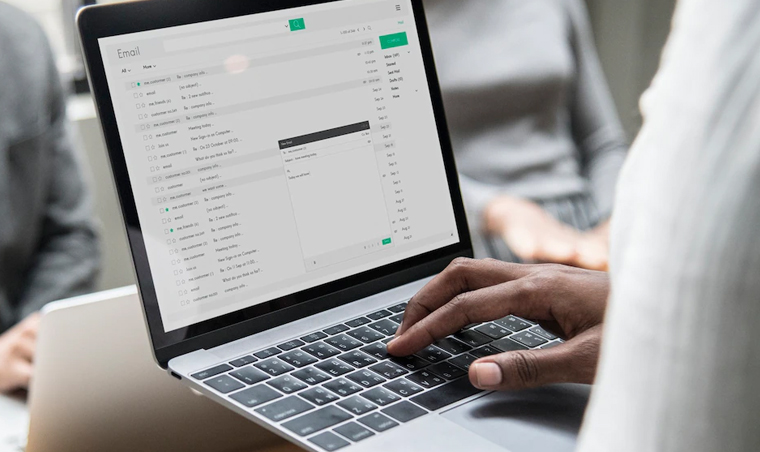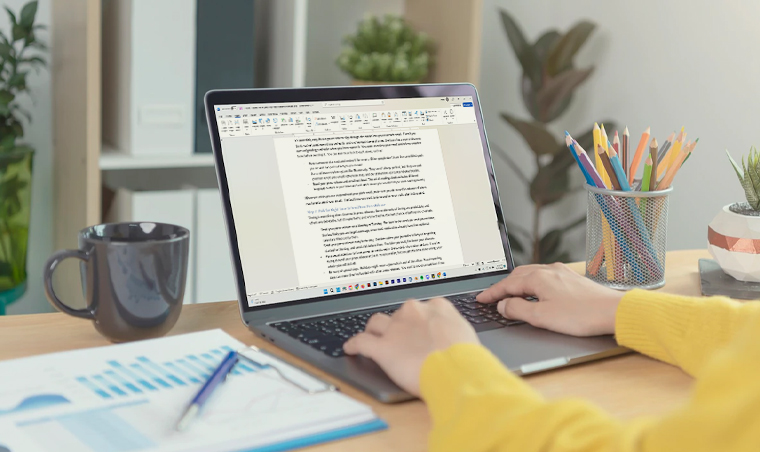
You’ve done it! You’ve spent hours working, and you’ve crafted the finest press release known to man. It has everything: it answers the five Ws, it has a great headline, it has plenty of information in the editor’s notes, and it’s all but guaranteed to get everyone who reads it interested in your announcement. There’s just one thing left to do, and that’s emailing or sending it to journalists.
So, you just build up a list of every journalist you can find and send it out, right? Bing bang boom, super simple.
Not quite.
Sending a press release is an art form unto itself. Sending it to the right people, at the right time, is critical for getting the press coverage your announcement deserves. That’s why we put together this guide; to let you in on our process for gaining the attention from the world’s foremost journalists.
Step 1: Build a List of Journalists and Publications
The very first thing you want to do is build up a list of journalists, reporters, influencers, publications, websites, and other locations where you may get coverage for your press release.

What kinds of journalists should go on the list? Look for people who:
- Have covered your business in the past, preferably favorably.
- Cover your industry.
- Write for publications that may be interested in your brand.
Meanwhile, try to avoid sites that make you pay for a press release submission, post your release in an unfiltered feed with zero editorial coverage, or are otherwise just “distribution channels” that don’t have any tangible benefit of their own.
You won’t necessarily get much traction if you only aim for the top-tier publications, but neither will you see tangible returns if you only submit to low-quality press release aggregators. You want a focused but wide-ranging distribution list.
Step 2: Identify Contact Information and Processes
At this point, it can be helpful to build a spreadsheet. This spreadsheet can be used any time you have a press release you want to send out.

It should include a primary column for the publication, and then additional columns for:
- The name of the person you would be contacting at the publication.
- The email address for the person you will be sending your press release to.
- The time zone the journalist is in.
- Special considerations, such as whether or not the journalist has covered you favorably in the past.
- Any special notes about the submission process, such as whether or not they only accept press releases on certain days.
- A record of any press releases they have published or written about in the past (or cases where you sent one and were ignored.)
All of this is customizable; add or remove columns as you deem necessary. The point is to have a central record and database of contact information, as well as a source you can use for seeing, at a glance, how well your press releases gain traction.
Sometimes, finding contact information for journalists is easy. They might just have it published in their Twitter bios, on their author profiles, or on their websites. Other times, you may need to do some digging, or use a service like hunter.io to dig up contact information for you.
Step 3: Create a Compelling Email Subject Line
In some cases, your press release headline can serve as an email subject line. In most cases, though, you’ll want something more compelling (and often a little shorter) for your email line.

First of all, you have very little space for a subject line to display. While email specifications allow up to 998 characters in a subject line, many email systems don’t display much more than about 60 characters before truncating it. You want to keep your subject short, around 8-10 words.
Leave out emojis. While you can use them if you’re careful, it’s often better not to, unless you have a very good reason. Remember, too, that different operating systems render emojis differently. Similarly, play carefully with punctuation, and don’t overdo it.
Step 4: Write Your Pitch Email
The bulk of the body of your email is going to be your press release, but you generally want something like 3-5 sentences prior to the press release that serves to convince the journalist why they want to cover your announcement.

Remember the five Ws, the Who/What/When/Where/Why? You cover these in your press release, but you want to cover them again in your pitch, preferably with a personalized spin for the journalist you’re emailing. It’s not why should your audience care, it’s why should their audience care.
If your press release is longer, you might also consider summarizing it in the body of the email, preferably using quick bullet points to cover the salient takeaways. That way, the journalist can see at a glance what they would be covering, and can read the full release for more information.
Step 5: Include the Full Press Release in the Body
Next up, you’ll want to include some kind of horizontal divider, even if it’s just a series of —– or ===== to divide the email from the press release.
Then, paste in your full press release. Leave out any images or attachments, of course. You want this press release to be fully available to the journalist right there in the email. If they have to click past your email to find your press release, why would they, when other releases they could cover are right there next to your email?

Now, of course, you’ve followed our instructions and guides on how to create excellent press releases (or you’ve had us make a great one for you), so you shouldn’t run into issues with the press release you’ve pasted in. That said…
Step 6: Proofread Your Email and Press Release
It’s incredibly easy for a typo or error to slip through the cracks into your outreach email. Even if you think you’ve typed everything perfectly, and you’ve read it several times, the brain has a way of skipping over or ignoring a mistake when you least expect it. You want to review your email and release another time before sending it.

You can also try a trick to spot issues, such as:
- Have someone else read and review it for errors. Other people don’t have the same blind spots you do and can pick out a typo you missed.
- Use a software review system like Grammarly. They aren’t always perfect, but they can spot common errors you would otherwise miss, and can streamline your press release besides.
- Read your press release and email out loud. The act of reading aloud activates different language centers in your brain and will catch issues you wouldn’t if you were reading silently.
Whatever tricks you use to proofread your pitch email, make sure you do so well in advance of when you have to send your email. The last thing you want to do is spot an error right after hitting send.
Step 7: Pick the Right Time to Send Your Press Release
Timing is everything when it comes to press releases.

Some elements of timing are predictable, and others are debatable, but it’s essential to pick a time that has the best chance of getting you coverage.
- Send your press release on a Monday or Tuesday. The later in the week you send your release, the less likely you are to get coverage, since most media sites already have their editorial calendars filled out by then.
- Send your press release early in the day. Consider when your journalist is likely to be getting started for the day, and send a bit before then. The later you wait, the lower your chances.
- Pay special attention to time zones, as mentioned in the contact information section. If you’re trying to send your press release at 9 a.m. to a journalist, but you get the time zone wrong, your whole plan will fall off.
- Be wary of special days. Holidays might mean a journalist is out of the office. Fiscal reporting days can mean they’re flooded with other press releases. You want to avoid competition if you can.
- Send your press release on an odd minute. Most apps and software that send emails will tend do to so on the hour or the half hour, so if you send at five minutes past, your email will appear at the top of the stack.
Unfortunately, it can be difficult to tell whether or not timing has an impact, since there’s no easy way to test different times, and since every journalist is unique in that regard. Just do the best you can with the information you have.
Pro Tips for Excellent Press Release Emails
Once you have all of the above set up, you’re ready to hit send. Before you do, though, consider some of these pro tips to make sure your press release has the greatest possible chance of being covered.

Tip: Personalize your emails.
Whenever possible, it’s a good idea to personalize the emails you send to journalists. Yes, this takes a lot more time and means you can’t just send the same email out to hundreds of journalists. But, it will dramatically increase the rate of success with getting coverage.
Remember, journalists are used to receiving dozens of press releases every week. Chances are, they have seen and can recognize every major template out there. They can recognize a form email from a mile away. A customized email that mentions previous coverage, a past relationship, or a concern they have can gain a lot more mileage.
Tip: Never include attachments.
Above, we mentioned to avoid attachments or images in your press release. Why?
Well, any media included in an email has a risk of not rendering. If you’re relying on an image in your press release, and it doesn’t load because the email system strips or blocks it, then you’ve lost.
Attachments are even worse, because attachments are a primary vector for malware. Corporate email systems will strip or block them entirely, and many journalists know better than to open them, even from trusted senders. It’s simply too big of a risk.
Instead, copy your whole press release into the body of the email, and if you need to include more information or context, include links for further reading.
Tip: Include contact information you monitor.
Sometimes, your journalist will want more information, an exclusive quote, or another big of added value from you while they write their story. How can they get it? A great option is to include contact information in your email. Not just any contact information, though; don’t just use your general business inquiries email or supprt@company.com email. Give them an exclusive, direct line to your management, something that has a much greater chance of being seen and responded to by a leader in your organization.
Tip: Follow up on your press release, politely.
Ideally, you’ll be sending your press release in advance of the actual date of publication, to allow for more back-and-forth and media creation. What happens if a journalist doesn’t respond? Well, naturally, you’ll want to follow up with them. The question is, how?
First, wait a few days. If you’re following up the day after you sent the press release, they might not have even gotten to it yet, and then you just look pushy.
Second, rather than re-send the whole pitch and press release, send them a follow-up asking if they saw it. Something like “We’re worried you missed our message.” Be humble, not arrogant; remember that the journalist holds the power here.
If they don’t respond or publish coverage by the time you follow up a second time, it’s probably not going to happen.
Tip: Use a top-tier press release service.
Sometimes, sending out a press release is just too much work. It’s daunting, it’s difficult, and it means being glued to your email system for days on end. So, why not let the pros handle it? We’re one of the best press release creation and distribution companies around, and we’re more than happy to do it all for you and get you the media coverage you deserve. Just click here to get started!
